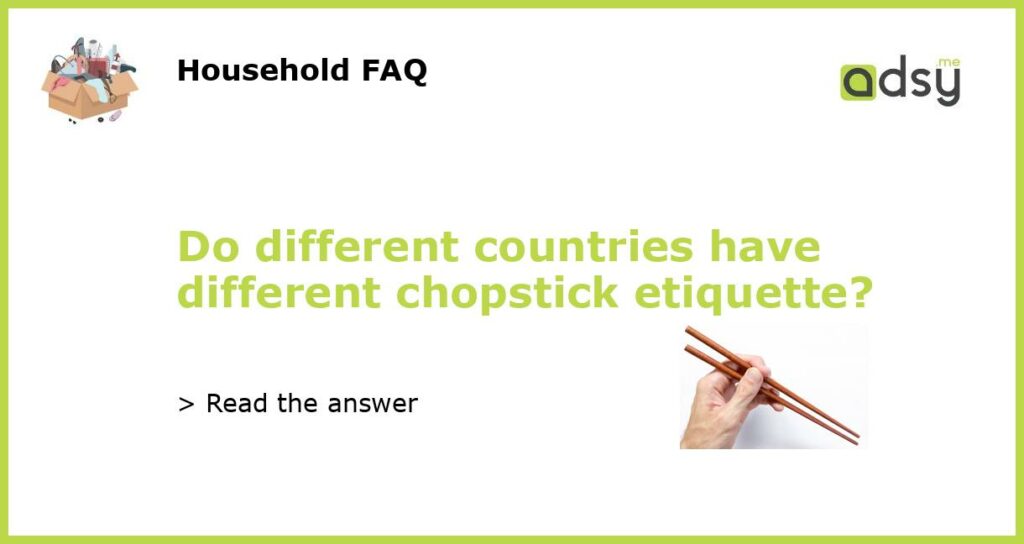Chopstick Etiquette: Does it Vary Across Different Countries?
Chopsticks are a ubiquitous dining tool in many Asian countries, including China, Japan, Korea, and Vietnam. Each country has its unique cuisine and dining culture, but do they also have different chopstick etiquette? Let’s dive in and find out.
China
In China, chopsticks are used not only for food but also for cooking and even as a makeshift tool. One of the essential etiquette rules is not to use chopsticks to point or gesture. It is considered rude and reminiscent of pointing with fingers. Additionally, sticking chopsticks upright in a bowl of rice resembles a ritual offering for the dead and is forbidden.
Japan
Japanese chopsticks are shorter than their Chinese counterparts and are often made of wood or bamboo. Unlike China, it is acceptable to use chopsticks to gesture in Japan, but it is considered impolite to transfer food between chopsticks, which symbolizes passing bones during a funeral. Another notable difference is that in Japan, it is customary to say “itadakimasu,” meaning “I gratefully receive” before starting a meal and “gochisousama deshita” or “thank you for the meal” after finishing.
Korea
Korean chopsticks are also made of metal, but they are slightly thinner and flatter than their Chinese counterparts. One of the significant differences in chopstick etiquette is that in Korea, it is customary to use a spoon and chopsticks simultaneously. It is also considered impolite to spear food with chopsticks, riffle through the food, or bring an empty chopstick to your mouth. Lastly, when sharing a meal with others, it is customary to wait for the eldest or most senior person to start eating before starting.
Vietnam
Vietnamese chopsticks are shorter than those in China and are made of wood, plastic, or bamboo. It is acceptable to use chopsticks to gesture in Vietnam, unlike the Japanese. One of the primary etiquette rules is to place the chopsticks horizontally on the bowl, not vertically, and to use a chopstick rest if available. Additionally, similar to Korea, it is customary to use chopsticks and a spoon together and not to touch food with your chopsticks while browsing.
While there are variations in chopstick etiquette across different countries, there are also many similarities, such as not using chopsticks to point or gesture and not passing food between chopsticks. Understanding and respecting these cultural differences can help bridge gaps and enhance the dining experience, whether you are traveling or sharing a meal with someone from a different background.






